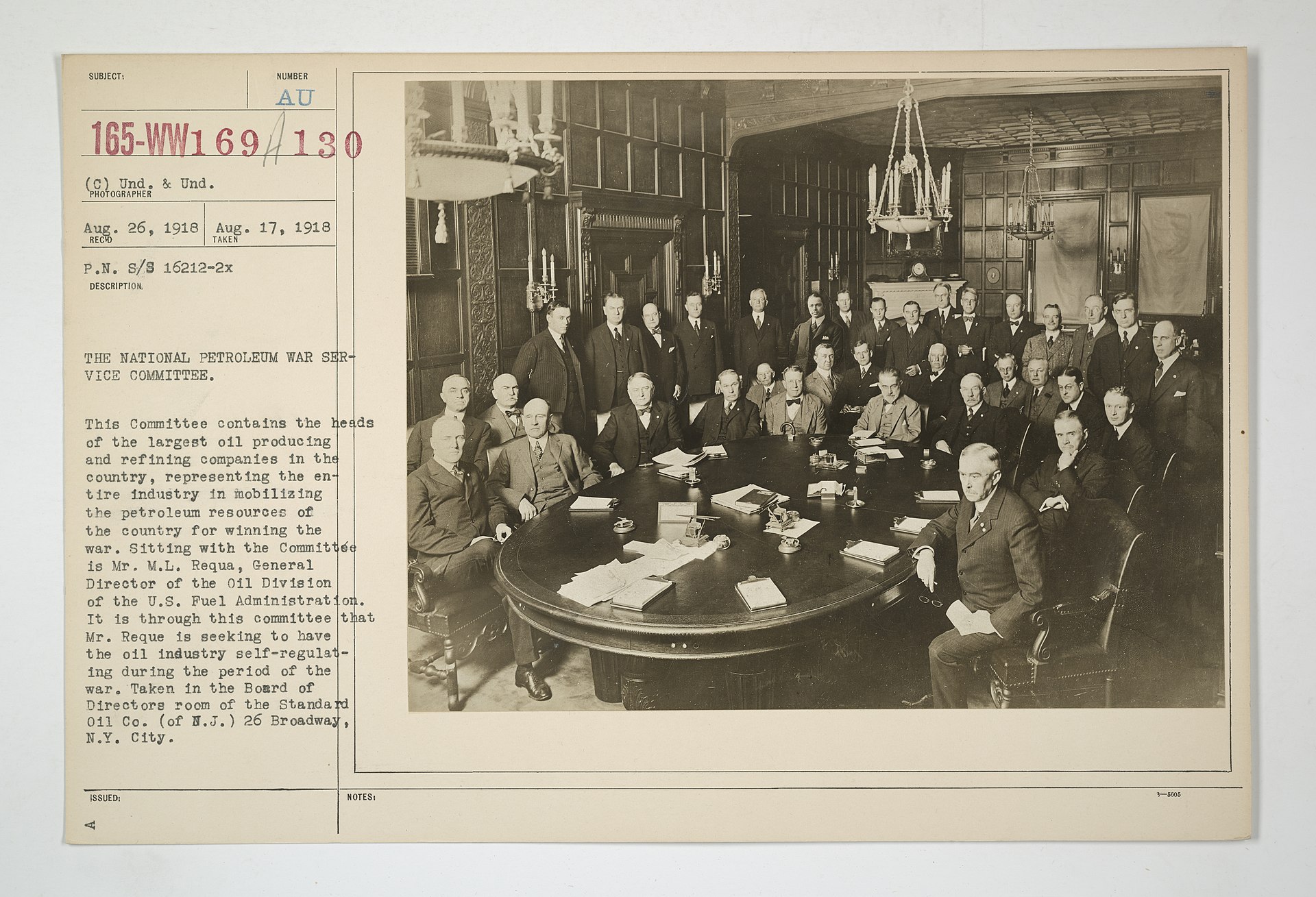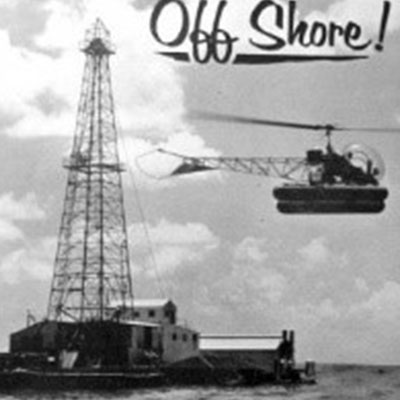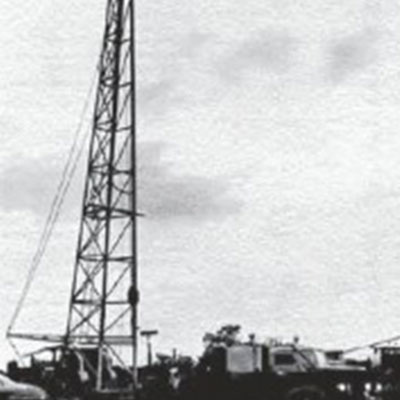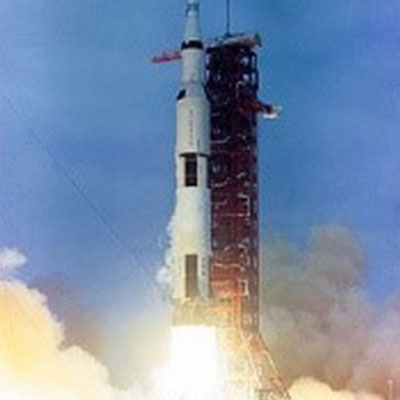About API
Who We Are
API represents all segments of America’s natural gas and oil industry, which supports more than 11 million U.S. jobs and is backed by a growing grassroots movement of millions of Americans. Our nearly 600 members produce, process and distribute the majority of the nation’s energy, and participate in API Energy Excellence®, which is accelerating environmental and safety progress by fostering new technologies and transparent reporting. API was formed in 1919 as a standards-setting organization and has developed more than 800 standards to enhance operational and environmental safety, efficiency and sustainability.
Although our focus is primarily domestic, in recent years our work has expanded to include a growing international dimension, and today API is recognized around the world for its broad range of programs:
Mission
API’s mission is to promote safety across the industry globally and to influence public policy in support of a strong, viable U.S. oil and natural gas industry.
Advocacy
We speak for the oil and natural gas industry to the public, Congress and the Executive Branch, state governments and the media. We negotiate with regulatory agencies, represent the industry in legal proceedings, participate in coalitions and work in partnership with other associations to achieve our members’ public policy goals.
API Energy Excellence
The natural gas and oil industry is unified in our commitment to accelerating safety and environmental progress across its operations, while meeting global demand for affordable, reliable and cleaner energy. Meeting this demand requires safe and responsible production, transportation, refining and exports. Under API Energy Excellence, API members commit to accelerating safety and environmental progress by adhering to 13 core elements that serve to continuously improve our performance as an industry. API members apply these elements to safeguard our employees, environment and the communities in which they operate.
Research & Statistics
API conducts or sponsors research ranging from economic analyses to toxicological testing. And we collect, maintain and publish statistics and data on all aspects of U.S. industry operations, including supply and demand for various products, imports and exports, drilling activities and costs, and well completions. This data provides timely indicators of industry trends. API’s Weekly Statistical Bulletin is the most recognized publication, widely reported by the media.
Standards
For more than 90 years, API has led the development of petroleum, natural gas and petrochemical equipment and operating standards. These represent the industry’s collective wisdom on everything from drill bits to environmental protection and embrace proven, sound engineering and operating practices and safe, interchangeable equipment and materials. API maintains more than 800 standards and recommended practices. Many have been incorporated into state and federal regulations and they are also the most widely cited standards by the international regulatory community.
Certification
Each day, the oil and natural gas industry depends on equipment to produce, refine and distribute its products. The equipment used is some of the most technologically advanced available in the search for oil and gas and allows the industry to operate in an environmentally safe manner. Designed for manufacturers of production, drilling, and refinery equipment, the API Monogram Program verifies that manufacturers are operating in compliance with industry standards. API also provides quality, environmental, and occupational health and safety management systems certification through APIQR. This service is accredited by the ANAB (ANSI National Accreditation Board) for ISO 9001 and ISO 14001. Let APIQR’s industry expertise certify your organization to API Spec Q1, API Spec Q2, API Std 18LCM, ISO 9001 and/or ISO 14001.
API also certifies inspectors of industry equipment through our Individual Certification Programs, designed to recognize working professionals who are knowledgeable of industry inspection codes and are performing their jobs in accordance with those codes. Through our Witnessing Programs, API provides knowledgeable and experienced witnesses to observe critical material and equipment testing and verification. API’s Training Provider Certification Program provides third-party certification for a variety of oil and gas industry training courses, further ensuring that any training provided meets industry needs.
In helping to improve industry safety, API has a way for service station owners to make sure their contractors have been trained to industry safety standards. API WorkSafe™ is a service station contractor safety qualification program that identifies personnel who have received training for and passed on-line standardized exams covering the latest service station industry safety practices.
For consumers, API provides the API’s Engine Oil Licensing and Certification System (EOLCS). It is a voluntary licensing and certification program that authorizes engine oil marketers who meet specified requirements to use the API Engine Oil Quality Marks. These emblems go directly on each container of oil that retains the certification for and is there to help consumers identify quality engine oils for their gasoline- and diesel-powered vehicles.
Events & Training
API organizes seminars, workshops, conferences and symposia on public policy issues. Through API-U, we provide training materials to help people in the oil and natural gas business meet regulatory requirements and industry standards.
API Principles
We are the problem-solvers who tackle the world’s greatest energy challenges—meeting growing demand, fueling economic growth and creating a better tomorrow.
To fulfill this responsibility, our members uphold the following principles:
- Advance safe and responsible U.S. petroleum and natural gas production, transportation, refining, marketing and use, and lead the world in meeting the growing demand for affordable, reliable and ever cleaner energy.
- Continually reduce environmental impacts and improve the health and safety of our employees, operations and communities.
- Commit to enhance the integrity of operations across the industry by applying API’s standards, implementing workforce training programs, and participating in performance initiatives.
- Promote free markets and free trade as the cornerstone of our industry’s efforts to compete and innovate to address current and future energy needs.
- Support risk-based, cost-effective government regulation and other policies that address critical challenges for industry and set industry-wide standards which promote U.S. innovation, investment and international competitiveness.
- Commit to hiring, training and developing a highly skilled and diverse workforce.
- Commits to be transparent and accountable to members, customers and employees regarding how decisions are made, priorities are set and performance is assessed.
- Emphasizes agility and responsiveness in meeting near-term challenges, while pursuing long-term value-creation and competitiveness for our industry, supported by science, data and analysis.
- Maintains a safe, inclusive work environment that is enriched by diversity and values open communication, hard work, respect and adherence to the highest ethical standards.
- Partners with other organizations where appropriate to leverage individual strengths and drive the best outcomes for the natural gas and oil industry.
To advance our members’ goals, API:
Our Origins
The American Petroleum Institute traces its beginning to World War I, when Congress and the domestic natural gas and oil industry worked together to help the war effort.
At the time, the industry included the companies created in 1911 after the court-imposed dissolution of Standard Oil and the "independents", companies that had been "independent" of Standard Oil. They had no experience working together, but they agreed to work with the government to ensure that vital petroleum supplies were rapidly and efficiently deployed to the armed forces.
The National Petroleum War Service Committee, which oversaw this effort, was initially formed under the U.S. Chamber of Commerce and subsequently as a quasi-governmental body.

The National Petroleum War Service Committee
After the war, momentum began to build to form a national association that could represent the entire industry in the postwar years. The industry’s efforts to supply fuel during World War I not only highlighted the importance of the industry to the country, but also its obligation to the public, as the original charter demonstrates.
The American Petroleum Institute was established on March 20, 1919:
- to afford a means of cooperation with the government in all matters of national concern
- to foster foreign and domestic trade in American petroleum products
- to promote in general the interests of the petroleum industry in all its branches
- to promote the mutual improvement of its members and the study of the arts and sciences connected with the natural gas and oil industry
Modern Origins
In late 1969, API made the decision to move its offices to Washington, D.C. where we remain today.
API is the only national trade association representing all facets of the natural gas and oil industry, which supports 10.3 million U.S. jobs and nearly 8 percent of the U.S. economy. API’s more than 600 members include large integrated companies, as well as exploration and production, refining, marketing, pipeline, and marine businesses, and service and supply firms. They provide most of the nation’s energy and are backed by a growing grassroots movement of more than 47 million Americans. In one generation, the United States has gone from steadily growing energy dependency to a nation that’s largely in control of its energy destiny. Natural gas and oil now drive the U.S. and world economies, and energy analysts project they will continue in that leading role for decades to come. This industry is changing our country’s narrative and altering its trajectory in historic terms, supplying the foundation for modern life and providing the fuel, power and products that make everyday life safer, healthier and more comfortable.
America’s natural gas and oil industry not only creates jobs, but also lifts entire communities, revitalizes manufacturing, strengthens U.S. security and develops the technology of the future; all while leading the charge in solving complex challenges.
That’s why the United States leads the world in both producing natural gas and oil, and in reducing greenhouse gas emissions. The old paradigm of energy and economic growth interlocked with increased emissions has been replaced. Today, growth and decreased emissions have occurred together. U.S. carbon dioxide emissions have plunged to their lowest level in a generation, while CO2 emissions around the globe have risen 50 percent since 1990.
This is where we are today. We are freer and more secure as a nation, able to plan for an optimistic future and global leadership because of abundant, secure domestic natural gas and oil.
While 2019 marks 100 years of the American Petroleum Institute and all that it offers to its member companies, what this milestone truly represents is 100 years of American energy innovation and achievement.
The U.S. energy industry has always been at the forefront of powering positive change – from supporting the war effort in World War I to the energy revolution that has made the United States the world’s leading producer, refiner and exporter of natural gas and the number one reducer of emissions.
Energy means everything to everyone. The natural gas and oil industry provides reliable and affordable energy to U.S. consumers, supports the creation of new technologies that we use every day, develops cleaner fuels, and exports energy that lifts developing communities out of poverty.
America’s natural gas and oil industry contributes to U.S. economic and energy leadership – supporting 10.3 million jobs, providing affordable energy to American families and businesses, strengthening U.S. national security, and establishing global best practices for safety and environmental stewardship.
Energy is the key to improving health, security and opportunity for millions. And the United States is the world leader in meeting demand growth safely and cleanly both here and abroad. As we honor a century of industry-driven progress, we also look ahead to a future made safer, brighter and more prosperous for communities around the world by continued energy innovation.
Here’s to the next 100 years of energy leadership.
-
American Petroleum Institute is founded.
API offices were established in New York City, and the organization focused its efforts in several specific areas: advocacy, industry statistics, equipment standardization and taxation.
-
API develops authoritative program of industry statistics.
As early as 1920, API began to issue weekly statistics beginning with crude oil production. The report, which was shared with both the government and the press, was later expanded to include crude oil and product stocks, refinery runs and other data.
API statistics remain one of the most credible sources of industry data and they are used worldwide.
-
API publishes first industry-wide standards for oil field equipment.
During World War I, drilling delays resulted from shortages of equipment at the drill site, and the industry attempted to overcome that problem by pooling equipment. The program reportedly failed due to lack of uniformity of pipe sizes, threads and coupling. Thus, API took up the challenge of developing industry-wide standards, and the first standards were published in 1924.
Today, API maintains nearly 800 standards and recommended practices covering all segments of the natural gas and oil industry to promote the use of safe, interchangeable equipment and proven and sound engineering practices.
-

First API Monogram license issued.
The first edition of API Standard 5L for the manufacture of line pipe was developed in 1927, with the first license issued in 1928. The first edition of the standard listed pipe sizes, minimum tensile and chemical content requirements, sampling rates, internal pressure tests, thread configurations, identifying marks to be stamped on each pipe, and a list of approved manufacturers who were to be licensed to "monogram" pipe as API Line Pipe. Subsequent editions of the standard as well as supplements are still published periodically to reflect changes and technological advances, with the latest edition – the 46th – issued in 2018. Over the years, the API standard has gained worldwide acceptance.
-
First oil discovery using reflection seismography.
After successful tests in the early 1920s, reflection seismic technology was first used to find oil on December 4, 1928. The Petroleum Corporation drilled a well into the Viola limestone formation near Seminole, Oklahoma. It was the world’s first oil discovery in a geological structure that had been identified by reflection survey. Other discoveries soon followed as the technology revealed dozens of mid-continent oilfields.
-
Discovery of catalytic cracker brings new advances in refining.
In 1937, chemists discovered a new advance in refining, the catalytic cracker. Employing a variety of new approaches, the catalytic cracker substantially increased the quality and yield of gasoline from each barrel of crude oil. The advancement provided the higher quality fuels needed to meet the increasingly specific requirements of new automotive engines.
-

Oil discovered in Saudi Arabia and Kuwait.
Saudi Arabian oil was first discovered by the Americans in commercial quantities in 1938 at Dammam Oil Well No. 7 – a site named after a nearby village – in what is now Dhahran.
-
Petroleum surpasses coal in U.S. energy supply for first time.
Due to the tremendous increase in natural gas and oil consumption after World War II, petroleum supplied more of our nation’s energy than coal for the first time in 1946. By 1950, natural gas and oil were supplying 57.8 percent of U.S. energy requirements.
-

First offshore oil well out of sight of land.
The modern offshore natural gas and oil industry is born on November 14, 1947, when an exploratory well strikes oil in the Gulf of Mexico. It is the first successful offshore oil well out of sight of land.
Image credit: American Oil & Gas Historical Society
-

First commercial application of hydraulic fracturing.
On March 17, 1949, a team of experts converge on an oil well about 12 miles east of Duncan, Oklahoma – and make history by performing the first commercial application of hydraulic fracturing.
-

World’s first LNG tanker arrives in England from Louisiana.
On February 20, 1959, after a three-week voyage, the Methane Pioneer – the world’s first liquefied natural gas tanker – safely arrives at the world’s first LNG terminal at Canvey Island, England, from Lake Charles, Louisiana, initiating commercial LNG shipping.
-
The Organization of the Petroleum Exporting Countries (OPEC) founded.
The Organization of the Petroleum Exporting Countries (OPEC) was founded in Baghdad, Iraq, with the signing of an agreement in September 1960 by five countries – Iran, Iraq, Kuwait, Saudi Arabia and Venezuela.
-
3-D seismic technology developed.
The development of 3-D seismic technology completely changes the way the industry searches for natural gas and oil resources. Coupled with the use of parallel computers in seismic imaging, 3-D seismic imaging has sharply reduced exploration costs since the 1980s while increasing accuracy.
-

Kerosene fuels Saturn V rocket that carries Apollo 11 to the moon.
A 19th century petroleum product – kerosene – made petroleum history when it fueled the first stage of the Saturn V rocket that carries Apollo 11 to the moon, where astronaut Neil Armstrong announced on July 20, 1969, “Houston, Tranquility Base here. The Eagle has landed.”
-
OPEC embargoes shipments of foreign oil to the United States.
In 1973, U.S. dependence on foreign oil – and the danger it created – was made clear when the Organization of Petroleum Exporting Countries (OPEC) decided to embargo shipments of oil to the United States, causing shortages and raising energy costs.
-
Energy Policy and Conservation Act of 1975 bans exports of crude oil.
Following the OAPEC embargo, Congress passed the EPCA in December of 1975 in an attempt to stifle the impact of future oil embargos by foreign oil producing countries. The law required the president to ban crude oil exports, with a few exceptions. While oil imports dropped after the enactment of EPCA, they rose again a decade later.
-
4-D seismic imaging emerges.
By 1995, 75% of U.S. onshore surveys use 3-D seismic imaging. The same year brought the emergence of 4-D seismic technology – the comparison of 3-D seismic surveys over time. Time-lapse seismic reservoir monitoring greatly increases the ability to image fluid movement between wells, improves the quality of reservoir characterization, identifies movement of fluid interfaces and helps operators locate bypassed reserves.
-
First application of modern fracking.
In 1997, Mitchell Energy performed the first slickwater frack. This method substantially lowered the cost of hydraulically fracturing wells, leading to a boom in North American oil and gas production. Over the next ten years this technique was perfected and coupled with advancements in horizontal drilling. The resulting production, combined with the global economic slowdown at that time, led to an 85 percent drop in domestic natural gas prices – from over $13.00 per mmBtu in 2008 to under $2.00 in 2012.
-
Dawn of the U.S. shale energy revolution.
The marriage of hydraulic fracturing and horizontal drilling brought dramatic changes in the trajectory of the U.S. oil and gas markets. From 2005, U.S. natural gas production rose for 10 straight years. The previous production record set in 1973 was obliterated as production grew 50 percent from 2005 to 2015 to reach 27 trillion cubic feet. In the process, the U.S. became the world’s largest natural gas producer.
-
U.S. oil production increases at record pace.
U.S. oil production started to rise in 2008, and the next seven years marked the fastest oil production increase in U.S. history. Production of U.S. crude natural gas and oil liquids increased by six million BPD. Net imports of crude oil and products to the U.S. fell from 12.5 million BPD in 2005 to 4.7 million BPD in 2015.
-
Congress lifts 40-year ban on oil exports.
Thanks to the U.S. shale revolution and the resulting rapid increase in the production of natural gas and oil, the Energy Policy and Conservation Act of 1975 (EPCA) – and it’s ban on crude oil exports – was rendered unnecessary. At the end of 2015, Congress fully liberalized exports of all grades of U.S. crude oil, removing obstacles to market-based flows and pricing.
-
API turns 100.








